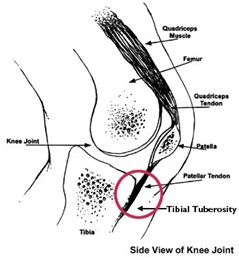Growth Plate Fractures
What You Need to Know
- Growth plates are areas at the end of certain bones that allow the bones to grow. A child continues to grow while the plates are “open.”
- A growth plate may fracture (break) due to a fall or another cause.
- A physical exam and X-rays are most often used to diagnose a growth plate fracture.
- Fractures of the growth plate can interrupt normal growth if not treated properly.
- Casting and splinting are common ways to treat growth plate fractures, but surgery may also be required in certain cases.
Growth Plate Fractures: What You Need to Know
- Growth plates are areas at the end of certain bones that allow the bones to grow. A child continues to grow while the plates are “open.”
- A growth plate may fracture (break) due to a fall or another cause.
- A physical exam and X-rays are most often used to diagnose a growth plate fracture.
- Fractures of the growth plate can interrupt normal growth if not treated properly.
- Casting and splinting are common ways to treat growth plate fractures, but surgery may also be required in certain cases.
What are growth plates?
Growth plates, also called physes or epiphyseal plates, are discs of cartilage present in growing children. They are located between the middle and the end of the long bones, such as the bones of the arms and legs. Most long bones have one growth plate at each end. When a child is done growing because his or her growth plates have closed and are no longer creating new bone. Growth plates are vulnerable and may fracture — a similar injury would lead to a sprain in an adult.
How do growth plate fractures happen?
Growth plate fractures commonly result from falls or sports, bike and motor vehicle accidents. In some cases, a growth plate may fracture due to an overuse of a joint. An example is growth plate fractures that may occur in Little League pitchers because of excessive throwing.
Your child should be treated at your local emergency room or urgent care clinic immediately after the injury. The medical staff will be able to tell you whether surgery is needed. For fractures that do not require surgery, you should still make an appointment with your physician for follow-up care.
Types of Growth Plate Fractures
Growth plate fractures are classified based on which parts of the bone are damaged, in addition to the growth plate. Areas of the bone immediately above and below the growth plate may fracture. They are called the epiphysis (the tip of the bone) and metaphysis (the “neck” of the bone). The most common growth plate fracture runs through the metaphysis. For example, a tibial metaphyseal fracture is a growth plate fracture in the biggest of the leg bones below the knee.
Growth Plate Fracture Diagnosis
Many growth plate fractures are easily visible on X-rays. Usually, X-rays of the affected bone are sufficient. However, sometimes it is necessary to take images of the opposite side for comparison.
Some growth plate fractures cannot be seen right away on an X-ray. Other tests may need to be done, including ultrasound, CT scans or MRI scans. Your doctor may also rely on the location of the pain or other signs and symptoms for diagnosis.
Growth Plate Fracture Treatment
Growth plate fractures are generally treated with splints or casts. Sometimes, the bone may need to be put back in place to allow it to heal in the correct position. This may be done before or after the cast is placed and is called a closed reduction. The length of time your child needs to be in a cast or splint depends on the location and severity of the fracture. Your child’s age also matters: younger patients heal faster than older patients.
If the fracture was manipulated (reduced), you will need to follow up with your child’s orthopaedic specialist more frequently. The fracture must be closely monitored after it’s healed to make sure the bone continues to grow normally.
Some growth plate fractures require surgery to ensure the growth plate is optimally aligned for normal growth of that bone. The surgery is called open reduction and internal fixation. It consists of exposing the bone to put it in place with screws and plates.
What are possible complications of growth plate fractures?
The most serious complication is early closure (complete or partial) of the growth plate.
- Complete closure means the entire growth plate of the affected bone has stopped expanding. This results in the affected bone not growing as long as the opposite side.
- Partial closure means the damaged part of the growth plate has stopped working. In the meantime, the undamaged portion continues to produce new bone. This results in the bone growing at an abnormal angle.
The severity of and need for treatment of growth plate closures depend on the location of the fracture and the age of the patient. Treatment options include:
- Surgically shutting down the growth plate on the opposite side.
- Surgical lengthening of the injured bone.
- Shortening of the normal bone.
Other complications of growth plate fractures include delayed healing of the bone, nonhealing, infection and loss of blood flow to the area, causing death of part of the bone.






